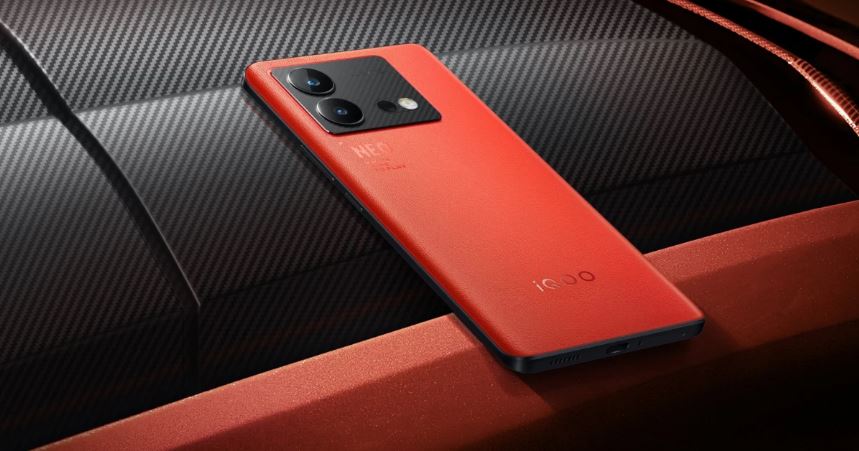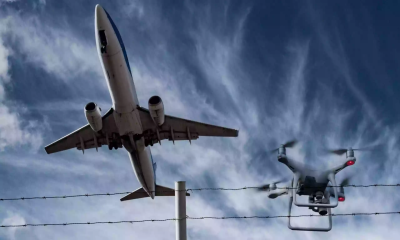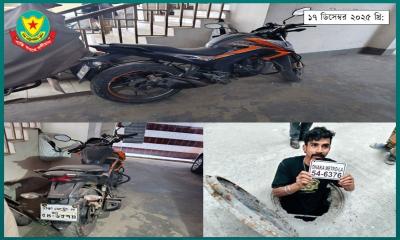vivo’s sub-brand iQOO mainly works on the “flagship killer” category smartphones assuring value and performance for the users. The vivo iQOO Neo 8 Pro was released on 23rd May in China. So how does it differ from the Neo 7 Pro? And is it going to seal the title of flagship killer for 2023? Let’s find out.
Key Specifications of the vivo iQOO Neo 8 Pro
Design and Build Quality
The first thing that stands out is the design and build quality of the smartphone. There are three color variants on the 8 Pro, red, black, and mint. The red one uses a deep orange shade of vegetable tan leather on the back which provides a great texture and hand feel. The rectangular camera housing on the red variant has a distinct carbon fiber-like texture. The contrasting design elements on the back give the device a unique look.
Dimension-wise, the device comes in at 164.7 x 77 x 8.5 mm. The device is on the lighter side at just 192 gm. The even weight distribution makes it easy to hold for a long time without hand fatigue. The frame of the device is made from plastic with a glass front and leather (red) or glass back. There’s no protection rating for the front glass which can be an issue for many users.
The device comes with the standard ports and buttons. Additionally, there’s an IR blaster on top so if you have IoT devices in your home, the phone can serve as a secondary remote. The Type C port and the sim-slot are placed at the bottom. Unfortunately, there’s no micro SDXC support on the 8 Pro. But the 256 GB base variant should be more than ample for most users.
Overall, the 8 Pro is reiterative of the iQOO design elements. It doesn’t reinvent itself much which may very well be its strongest suit in terms of design elements.
Display
The display on the iQOO Neo 8 Pro is a 6.78-inch AMOLED panel with 1260 x 2800 resolution. The unusual resolution brings the display to around 453 ppi with a 20:9 aspect ratio. In addition to that, the display supports 1B colors, 144Hz high refresh rate, HDR10, and 1300 nits of peak brightness.
The high refresh rate combined with the 1.5K resolution makes it a crystal clear sharp display. The chins and perimeter bezels have also been significantly reduced to make way for an 87.5% screen-to-body ratio.
In typical use, the display is perfect for media consumption. The HBM helps with outdoor visibility with reduced glare and sharp contrast. The high refresh rate and touch sampling also elevate the gaming experience on the 8 Pro.
Overall, the display is one of the strong elements of the device. It easily takes one up over the 7 Pro with better resolution and a higher refresh rate.

vivo iQOO Neo 8 Pro. (Image source: vivo.com.cn)
Camera
There is a dual camera setup on the iQOO Neo 8 Pro. The main sensor is a 50 MP f/1.9 wide-angle shooter with a 1/1.49-inch sensor. There’s an additional 8 MP ultrawide shooter onboard the camera housing on the back. Given the choice to go with just two sensors, iQOO could have opted for a higher resolution supporting ultrawide shooter. But users would have to do with 8 MP for this iteration.
The main camera performed well in outdoors and brightly lit conditions. However, the colors tend to be on the warmer side which sort of gives the pictures an artificial pop. This tends to happen more under direct sunlight. The portrait mode also could’ve used a bit more refinement. The edge detection on the camera is excellent but the processing tends to soften the subject. The apparent smoothening and softening become evident when the pictures are viewed on a larger panel like a laptop or PC. Other than that, the camera performance has been satisfactory.
The camera also performed well in low-light conditions. The stock night mode did a pretty good job of balancing the exposure in low light. The story is also somewhat similar with the front 16 MP camera. It`s good for social media selfies and casual shots, nothing more than that.
Neo 8 Pro supports videography up to 8K at 30 fps. But the gyro-EIS doesn’t kick in at 8K. As a result, the videos won’t be that useful unless you are using an external gimbal. The 4K and 1080P at 30/60 fps did a relatively better job at stabilization.
Processor and Performance
The processor is where the 8 Pro significantly differs from the 7 Pro. While the 7 Pro came with the Snapdragon 8+ Gen 1 chipset, the 8 Pro made the shift to MediaTek Dimensity 9200+ based on the 4 Nm architecture.
There’s a lot of confusion regarding the processors and their performance. In terms of raw performance and benchmark scores, the Dimensity 9200+ takes the lead being the latest flagship-level processor. The octa-core chip has 1 3.35 GHz Cortex-X3 & 3 3.0 GHz Cortex-A715 & 4 2.0 GHz Cortex-A510 chips with the new Immortalis-G715 MC11 processor.
In terms of performance, the 8 Pro did not disappoint. The device was able to run all the leading 3D titles like Asphalt 9, Genshin Impact, and PUBG easily with medium settings. Genshin Impact was run on the max settings and it did fairly well barring a few frame drops here and there. The thermal management was also satisfactory for the initial part. In the test, the device became significantly hot after about one and a half hours of continued gaming.
However, the lack of a dedicated cooling solution created thermal throttling for the processor. As a result, there was a significant performance drop while gaming after about the 2-hour mark. The app loading and RAM management has also significantly improved thanks to the UFS 4.0 storage system and an additional 8 GB of converted RAM with the 16GB onboard one.
In day-to-day use, the processor absolutely breezes thanks to the high refresh rate display and the smooth animation of the OriginOS 3 (China). The device is expected to get the Funtouch 13 OS once it becomes available globally.

vivo iQOO Neo 8 Pro (Image source: vivo.com.cn)
Battery and Charge Time
iQOO Neo 8 Pro comes with a 5000 mAh battery onboard. The 120W wired fast charging takes the battery from 0 to 50% in 9 minutes with full charge taking less than 30 minutes. It’s a game changer in terms of charging thanks to the hyper-fast charging system. The device itself can churn out about 7 to 7 and a half hours of SoT with regular use.
Pros and Cons of vivo iQOO Neo 8 Pro
Pros:
- High RAM variants
- Amazing display with 144 Hz refresh rate
- Powerful chipset
- Great battery and charging
- Premium design elements
- Advanced data transfer technology.
Cons:
- No rated front glass protection
- No IP rating
- Portrait mode on the camera could be better.
Price of vivo iQOO Neo 8 Pro
The iQOO Neo 8 Pro comes in 16/256 Gb and 16/512 Gb variants. The base variant costs 3299 RMB whereas the higher storage variant costs 3599 RMB. At the current exchange rate, the price of the base variant comes in at 49862 BDT whereas the latter costs 54396 BDT (1 RMB = 15.11 BDT). However, the price may significantly differ once the device becomes officially available in Bangladesh.
Final Verdict
The vivo iQOO Neo 8 Pro comes with some improvements over the Neo 7 Pro. The device has an excellent display, processor, and battery power. Its unique design and value-for-money proposition easily make it a great choice for performance-oriented users. But where the device shines in performance, it falls a bit short on the camera department. Issues with tonality and video optimization are some glaring problems that might be a deal breaker for photography enthusiasts.







-20251216092417.webp)

















-20251216090625.jpeg)

-20251218165258.jpeg)









